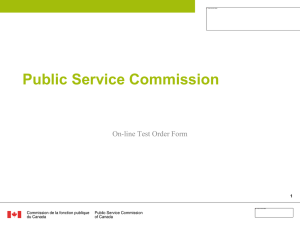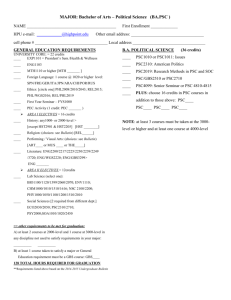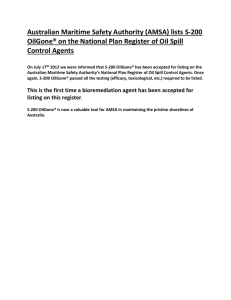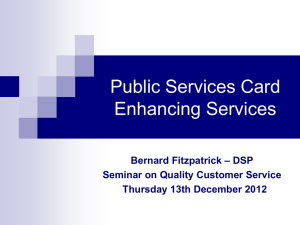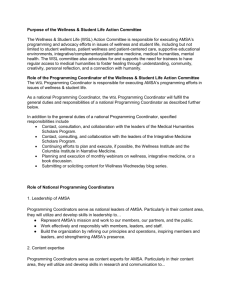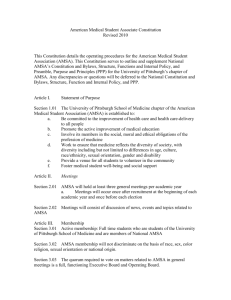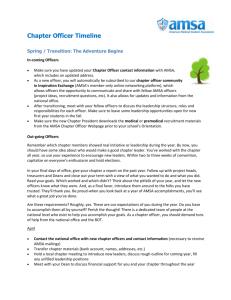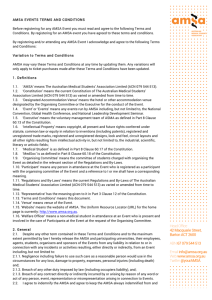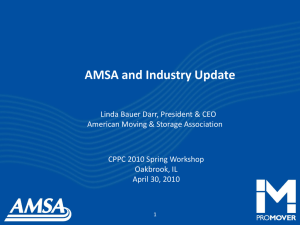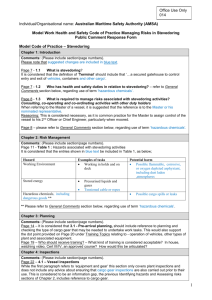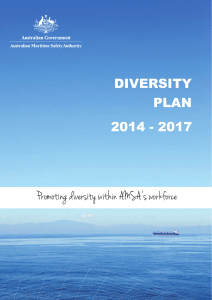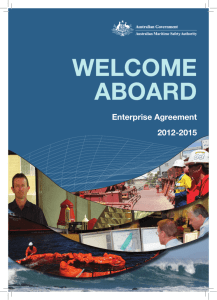Bulletin-234 - Barbados Maritime Ship Registry
advertisement
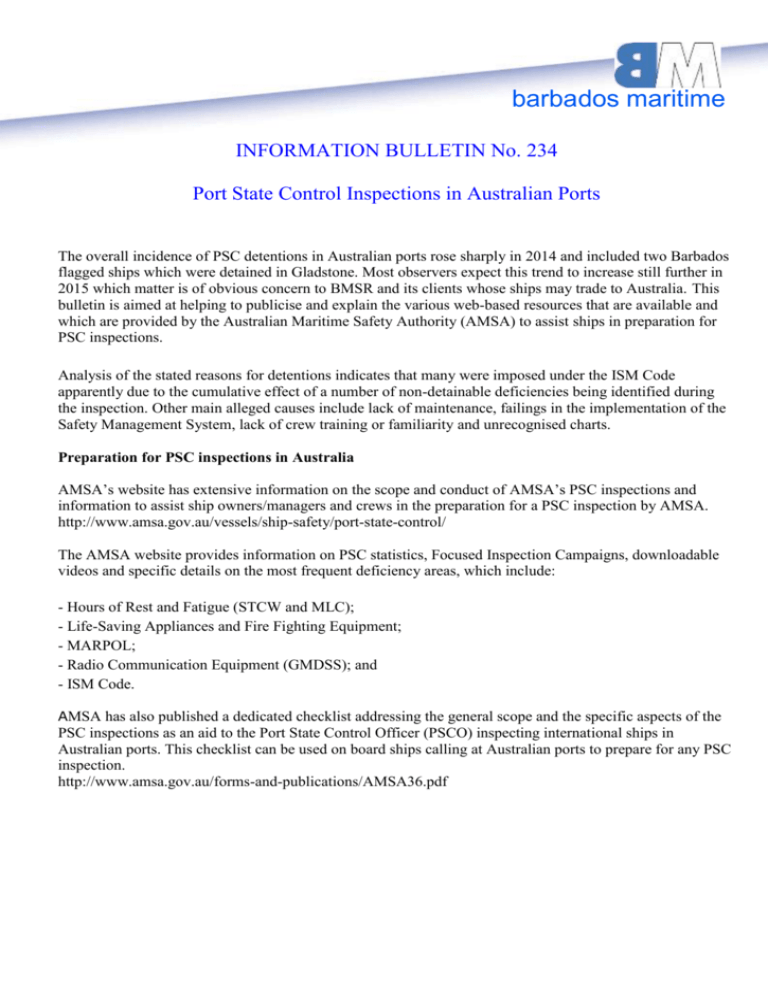
barbados maritime INFORMATION BULLETIN No. 234 Port State Control Inspections in Australian Ports The overall incidence of PSC detentions in Australian ports rose sharply in 2014 and included two Barbados flagged ships which were detained in Gladstone. Most observers expect this trend to increase still further in 2015 which matter is of obvious concern to BMSR and its clients whose ships may trade to Australia. This bulletin is aimed at helping to publicise and explain the various web-based resources that are available and which are provided by the Australian Maritime Safety Authority (AMSA) to assist ships in preparation for PSC inspections. Analysis of the stated reasons for detentions indicates that many were imposed under the ISM Code apparently due to the cumulative effect of a number of non-detainable deficiencies being identified during the inspection. Other main alleged causes include lack of maintenance, failings in the implementation of the Safety Management System, lack of crew training or familiarity and unrecognised charts. Preparation for PSC inspections in Australia AMSA’s website has extensive information on the scope and conduct of AMSA’s PSC inspections and information to assist ship owners/managers and crews in the preparation for a PSC inspection by AMSA. http://www.amsa.gov.au/vessels/ship-safety/port-state-control/ The AMSA website provides information on PSC statistics, Focused Inspection Campaigns, downloadable videos and specific details on the most frequent deficiency areas, which include: - Hours of Rest and Fatigue (STCW and MLC); - Life-Saving Appliances and Fire Fighting Equipment; - MARPOL; - Radio Communication Equipment (GMDSS); and - ISM Code. AMSA has also published a dedicated checklist addressing the general scope and the specific aspects of the PSC inspections as an aid to the Port State Control Officer (PSCO) inspecting international ships in Australian ports. This checklist can be used on board ships calling at Australian ports to prepare for any PSC inspection. http://www.amsa.gov.au/forms-and-publications/AMSA36.pdf Conduct of AMSA PSC Inspections Before a PSC inspection by AMSA formally commences, the PSCO will hold an opening meeting with the Master. At the opening meeting the PSCO will explicitly ask the Master if the vessel is in a seaworthy condition with all equipment working. If the Master confirms to the PSCO that all equipment is working and that the ship is seaworthy, the Master will then be asked to sign the front page of the Ship Inspection Record (SIR) book alongside the statement “Master advises that all equipment is operating satisfactorily and that the vessel is seaworthy”. Once the SIR has been signed by the Master, any deficiency identified, which has not been previously advised to the PSCO, will be reported in the inspection form and allocated an appropriate action code (e.g. 16, 17, 30, etc.). AMSA’s position on reporting of deficiencies “…if a Master advises his Administration, Class and local Port State Authorities of a deficiency that has, or may, impact on the vessel’s seaworthiness, that deficiency should not be considered as grounds for detention, unless the ship intends to sail with the deficiency un-actioned.” This does not mean that a deficiency will not be recorded or that the vessel will be permitted to depart without rectifying a normally detainable deficiency but that actions to rectify the deficiency will be monitored to ensure proper remedial actions are taken before it is allowed to depart.” “Companies are reminded that failures and breakdowns of equipment need not be a cause for detention provided that the Flag State and Recognised Organisation have been advised as soon as the breakdown is experienced, and the Port State has been alerted prior to arrival.” 14th January 2015


